Mushroom hunting is a great excuse to get out and go for a walk in the forest. The best part is as you get better, you’ll be coming home with tons of delicious mushrooms!
Many people are interested in learning about identifying and foraging mushrooms but don’t know where to start and never do. That’s why we made this guide to give you all the tips and resources for mushroom hunting in Pennsylvania!
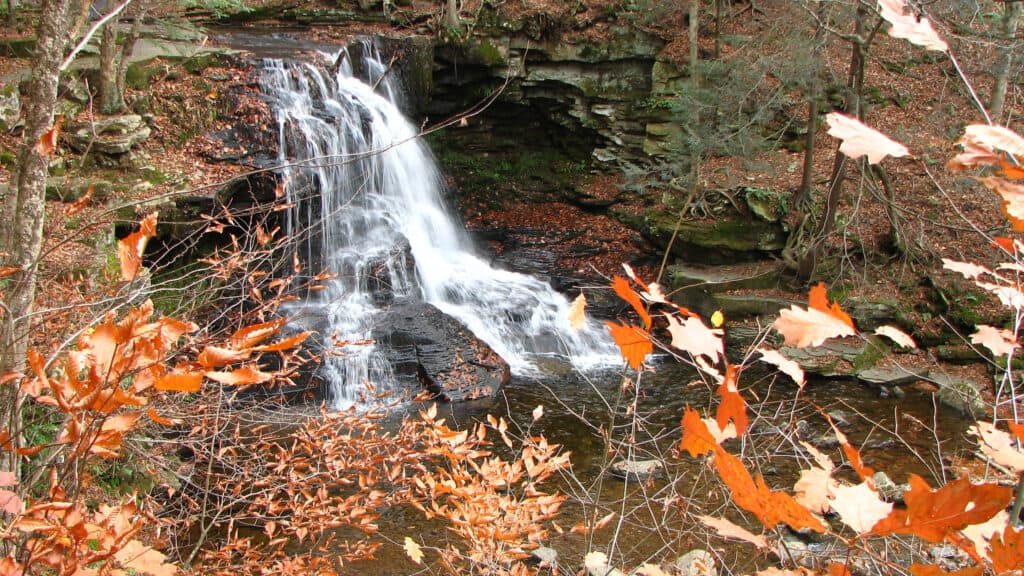
Many people are interested in learning about identifying and foraging mushrooms but don’t know where to start and never do!
©fishhawk / flickr – License
Getting Started
Most people are too intimidated to start learning about mushrooms. They’re worried they’ll accidentally pick a poisonous one and get very sick. Thankfully, there’s actually only a handful of lethal mushrooms in out there. You’re much more likely to grab a non-toxic, or even possibly edible mushroom.
However, this doesn’t mean you should go crazy picking and eating any mushroom you find. You should only ever eat a mushroom if you’re 100% sure of your find. One can also compare with photos online or ask an experienced mushroom hunter to confirm.
You also don’t need to be an expert to go looking for mushrooms. Most people never go foraging because they think they need to be able to identify everything they find. That’s totally not the case!
The best way to get started is by studying one or two, easy to identify edible mushrooms and just looking for those. While also taking time to learn about any possible look alike species. Remember that everyone with mushroom expertise started off not knowing anything. You have to start somewhere and then build up your knowledge!
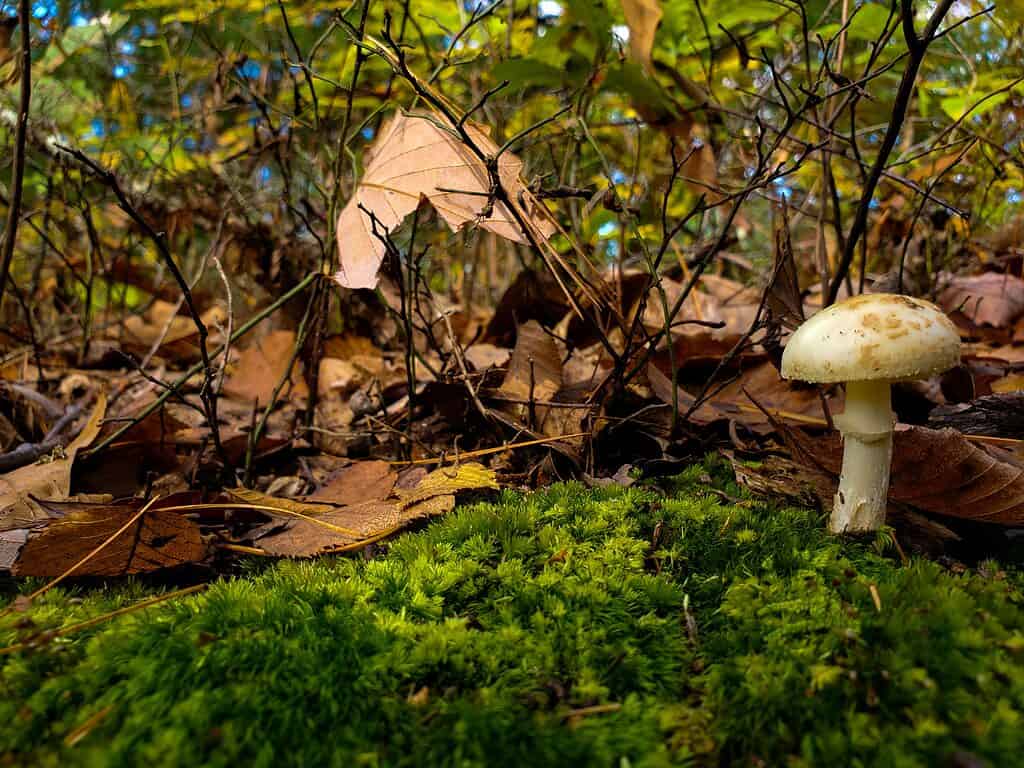
Most people never go foraging because they think they need to be able to identify everything they find. That’s totally not the case!
©Polar Barrel/Shutterstock.com
Is Foraging Legal in Pennsylvania?

Dandelions can be foraged in the state of Pennsylvania.
©Juice Verve/Shutterstock.com
In Pennsylvania state parks and forests under the management of DCNR, you are allowed to forage for edible wild plants or plant parts for personal or family use, unless the plant is categorized as threatened, endangered, rare, or vulnerable.
As an example, ginseng falls into the vulnerable category and is prohibited from being collected on state lands.
Here is a short list of plants that can be foraged in Pennsylvania:
- Dandelions, which are among the easiest plants to forage.
- Edible ferns, such as ostrich fiddlehead ferns.
- Japanese knotweed, an invasive plant that becomes edible when its shoots are just emerging.
- Wild garlic mustard, another invasive plant that grows abundantly.
- Wild alliums, including ramps and wild garlic.
Resources for Mushroom Hunting in Pennsylvania
Another important thing to keep in mind is that you don’t need to (and shouldn’t) go mushroom hunting all alone! There are tons of online resources and groups that you can join to help you get into the world of mushroom hunting.
This is also a great way to get more specific knowledge. Learn where to go looking and what specific time frame. Tips like this only come from experienced mushroomers!
First off, Mushroom Observer is a great site to check out for all things mushrooms. It’s not specific to Pennsylvania, but it has tons of information you can use.
Also, there are regional groups of mushroom hunters in Pennsylvania who get together to go foraging and share information. These groups can help you get more local information but also create a community to go hunting with!
For Pennsylvania, there are:
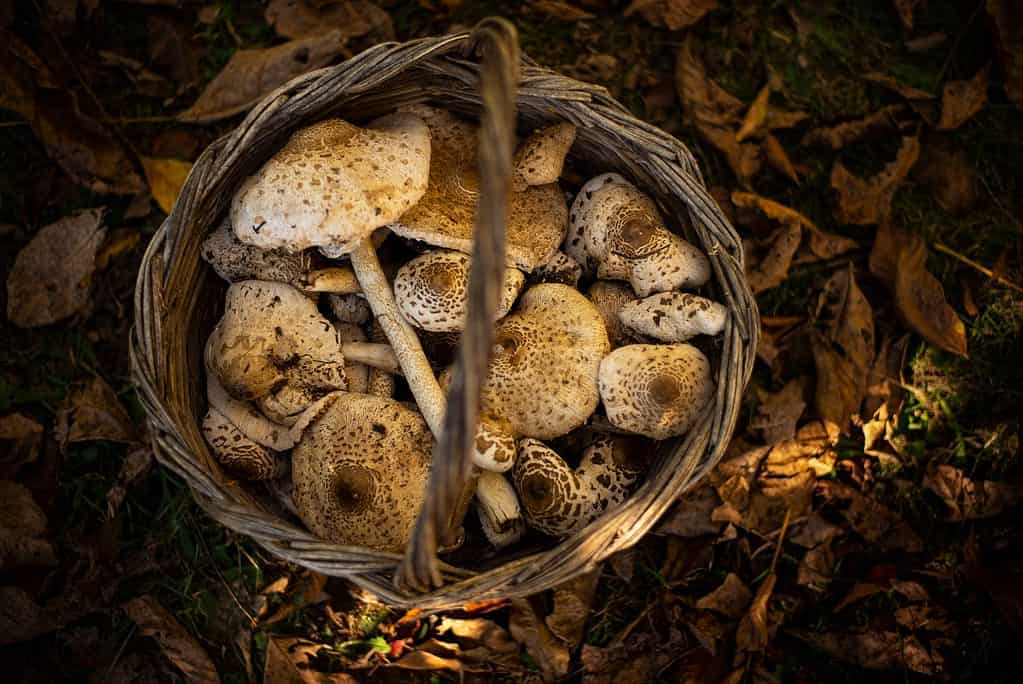
as long as they’re for personal consumption and not for commercial sale.
©Bonchev Photography/Shutterstock.com
Laws About Mushroom Hunting
Of course, before you can get out there, you need to know where you can go and how to go about hunting. Thankfully, the laws aren’t super strict in Pennsylvania and are easy to follow.
You do not need a permit and anybody is allowed to go mushroom hunting.
You can collect mushrooms in Pennsylvania state parks as long as they’re for personal consumption and not for commercial sale. If you want to collect mushrooms to sell in a market or to restaurants, there are completely different guidelines to follow.
The Pennsylvania Game Commission also allows wild mushrooms to be picked on their lands, again, as long as it’s for personal consumption.
Across the country, you can’t collect plants or fungi from national parks but you can collect from national forests. Allegheny National Forest is the only national forest in Pennsylvania and it’s in the northwestern corner of the state.
In the national forest, you can collect up to two gallons of wild mushrooms per day and per person (for personal use only). You’ll need special permission to collect more than that, but I can assure you, two gallons of mushrooms is a lot and will be enough!
You can go mushroom hunting on someone’s private property as long as you have their permission first. Of course, you can collect mushrooms on your own property as much as you want!
General Rules for Foraging
Along with the laws on mushroom hunting. there are some general rules that we follow to forage in a responsible and respectful manner.
The main rule, which goes for foraging of any kind, is to only take as much as you’ll use. It can be really exciting to find something edible, especially as a beginner. You may have a temptation to take as much as you can. But, keep in mind that what you’re collecting is also food for forest animals and it doesn’t help anyone if it’s rotting in your fridge!
Specifically for mushrooms, some people say always “tap the cap” to release the spores in the cap, so that more mushrooms can pop up! The spores in mushrooms are like the seeds in fruits- this helps release spores and support new mushroom growth!”
Some foragers even bring a pocket knife to snip mushrooms, although this isn’t necessary.
Lastly, be mindful and keep your eyes open! Mushrooms are all connected by a mycelial network, so if you spot one mushroom, it’s likely that there are several more around it- be careful not to step on other while you’re going to pick!

Mushrooms are all connected by an underground mycelial network, so if you spot one mushroom, it’s likely that there are several more around it.
©iStock.com/ariJ
Common Edible Mushrooms
While there are hundreds of edible mushrooms you could find in Pennsylvania, there are a few that are especially loved for their taste and coveted as top culinary mushrooms. These kinds of mushrooms are called “choice edibles,” which just means that they’re especially yummy and great for cooking.
Morel Mushrooms (Morchella spp.)
Ask any semi-experienced mushroom hunter (or chef for that matter) about Morel mushrooms and they’ll likely go on a whole ramble about these fantastic finds and their savory, nutty flavor.
Morel mushrooms are a top choice edible with a great taste and meat-like texture. They’re loved by mushroom hunters and cooks alike and are a special find considering how expensive they can be in specialty markets.
These mushrooms have a brown cap with deep ridges in a honeycomb pattern. There are toxic lookalikes, species from the genus Gyromitra are often called “false Morels”, some of which are toxic. I one helpful tip to tell the difference is to cut the mushroom down the middle: true Morels are hollow inside and this is one step in helping know which is which.
Many morels are quite small, most only a few inches tall, and will pop up in the matter of a few days- so be sure to circle back to spots you’ve already checked every once in a while during season.
Depending on the species, when Morels first pop up they have a grayish-brown color, but their stipe (stem) turns yellow as they mature. This is a sign that they’re ready to be picked!
In Pennsylvania, there’s a one-month period when Morels can be found, then they’re gone! This is usually mid-April up to mid-May, once the temperatures warm up enough for Morels to come up.
These mushrooms need moisture to grow, so you’ll find them in areas with damp soil. They often grow near dead trees and, in Pennsylvania, are known to grow around Elm, Apple, Tulip Poplar, Ash, or Sycamore trees.
Out west morels also grow well near burnt trees or on burnt soil. They’re often found on south-facing slopes, where they get lots of warmth from the sun.
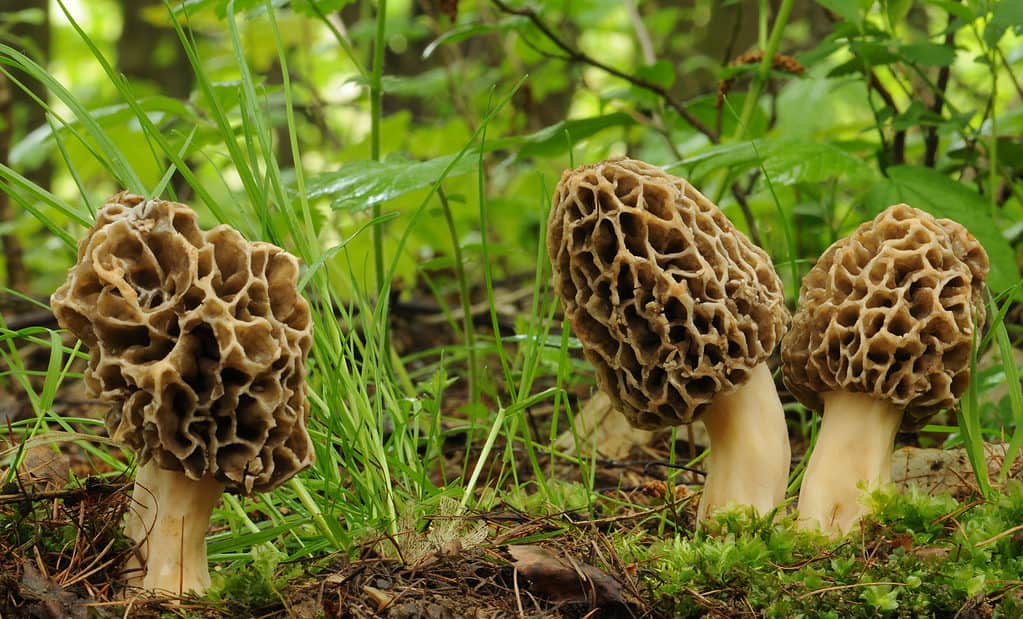
Morel mushrooms are a top choice edible with a great taste and meat-like texture.
©Tomasz Czadowski/Shutterstock.com
Chicken of the Woods (Laetiporus spp.)
The name might sound odd, but it’s pretty spot on. For one, this mushroom is bright yellow and orange but it also tastes like chicken! One species (Laetiporus sulphureus) is also sometimes called Sulphur Shelf, but that seems less appetizing.
These mushrooms are ideal for beginner foragers because they’re really easy to spot. They grow on dead or living tree trunks and the fruiting body grows out horizontally, like a shelf. They’re typically pretty large, spanning several inches if not a foot or more wide.
The mature mushrooms are bright orange with dark orange-red tips, however, it’s the younger specimens you want. You may be able to eat some of the older ones, but they become hard over time and the texture isn’t pleasant.
The younger Chicken of the Woods are more yellow. They’re shaped more like a glob because the younger specimens haven’t flattened out yet.
In Pennsylvania, they’re most often found growing on Oak trees, but they may also grow on Poplar, Aspen, Willow, Locust, or Beech trees. They can come up in spring or in late summer/early fall, as temperatures drop and older trees start to die off.
One important thing to note with Chicken of the Woods: you need to cook these mushrooms well to eat them. If eaten raw or even undercooked, you’ll likely have digestion problems, possibly severe.
Common Toxic Mushrooms
Along with knowing the common edible mushrooms, it’s important to know the basics about some toxic mushrooms you could come across. These toxic mushrooms aren’t super common, but it’s good to have an idea of what you should avoid.
One that you should absolutely not pick for the dinner table is the Destroying Angel, aptly named. This mushroom can deadly if consumed. It is a small relatively dainty pure white mushroom that is several inches tall with convex caps that flatten with age.
When they’re young, this toxic mushroom goes through an “egg phase” where they may resemble edible puffball mushrooms. Because of this, I have a personal rule of never picking white mushrooms, just to be safe (even though there are edible white mushrooms).
Other toxic mushrooms that can be found in Pennsylvania include some other Amanita species, the jack O’ lantern, green spored parasol, deadly Galerina, fool’s funnel, or the yellow stainer. Check out websites like Mushroom Observer(although you will need to know genus and species and not common names) or Mushroom Expert to get more detailed info on these mushrooms.
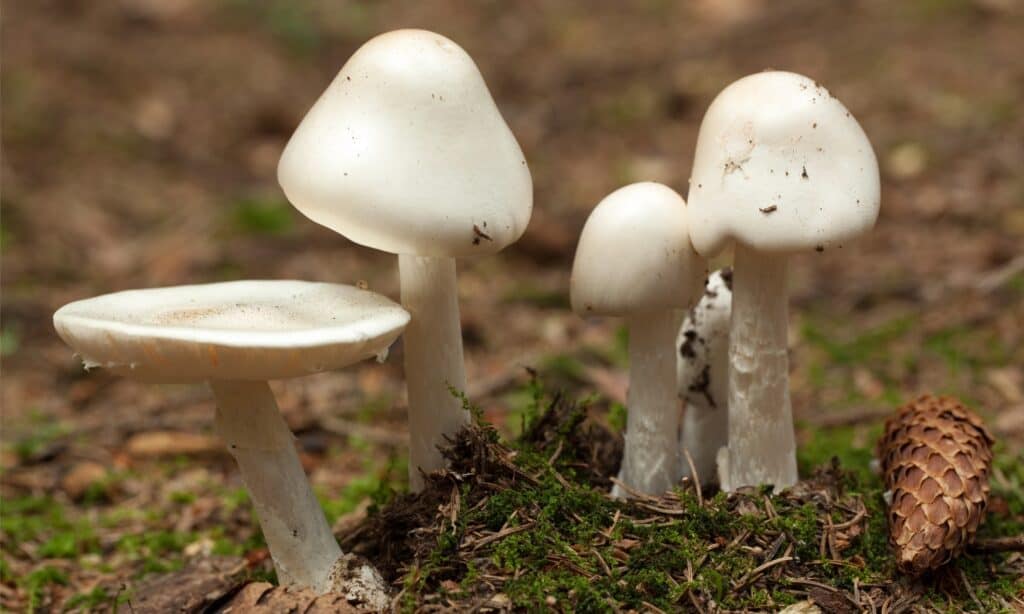
A mushroom that should absolutely not be picked for the dinner table is the Destroying Angel, aptly named. It can be deadly if consumed.
©iStock.com/dabjola
Where to go Mushroom Hunting
Of course, the best foraging spots are the best-kept secrets by experienced mushroom hunters and you can’t get that kind of info on the internet. Thankfully, most foragers are also very kind people and will share their spots if you ask or join a regional group.
You need to start by going to the places where it’s legal to forage, as explained earlier in this post, but once you’re in, you need to know where to look. Generally, mushrooms grow near old trees.
Forests with lots of plant life provide great nutrients for mushrooms, so look in these areas and a bit off the trails. Also keep an eye out along riverbeds or streams, since the moisture supports mushroom growth.
Most people also want to know specifically where to find Morel mushrooms. But you will be very hard pressed for anyone to give up their morel spots.
When to go Mushroom Hunting
Lastly, you’ll need to know what time of year is the ideal “mushroom season.” Broadly, spring through fall is when mushrooms will be popping up and can be harvested.
However, this is a range and most mushrooms have a more specific range of when they’ll be out. This range often depends on whether mushrooms are triggered by warming or cooling (which determines Spring or Fall).
In general, mushrooms aren’t cold tolerant, so mushroom season goes up to the first frost, which could be mid or late fall. Although, some mushrooms need the cold and will pop up right as temperatures drop.
Mushrooms really love moisture and often pop up after several days of rain, when the soil has been deeply watered. They won’t come up while it’s still raining but in the first day or two after the rain stops, head out to look for mushrooms!

Chanterelles are a common edible of Pennsylvania and should be relatively easy to find all summer long.
©Grusho Anna/Shutterstock.com
Time to Get Out There!
Surely, you’re not an expert after reading this article- but you don’t have to be! You could spend years researching and learning about fungi before ever going into the forest, and you still wouldn’t be able to identify everything.
That’s not to intimidate you with the depth of this knowledge, but instead to explain that you’ll never “be ready.” You just need to start learning and eventually you’ll build up a deep knowledge.
Now, that’s not to say that you should simply pick every mushroom you see and eat it! You still need to be careful, and especially as a beginner, before eating anything you find.
Don’t think that you need to bring something back to the dinner table every time you go out foraging– it’s better to admit that you’re not sure and either take thorough pics or take it home for further study. You can then also go home to compare them with pictures online or in field guides.
Mushroom hunting isn’t only about coming home with mushrooms. It’s also about learning to identify the fungi that live in your region and the way they grow with the change of seasons. It’s also about connecting with new people as you join foraging groups and discovering new parts of your home state.
I hope you found this guide useful and feel encouraged to begin mushroom hunting!
DISCLAIMER: Always check with a mycologist to confirm your finds and before ingesting.
The photo featured at the top of this post is © J.Pecora/Shutterstock.com
The information presented on or through the Website is made available solely for general informational purposes. We do not warrant the accuracy, completeness, or usefulness of this information. Any reliance you place on such information is strictly at your own risk. We disclaim all liability and responsibility arising from any reliance placed on such materials by you or any other visitor to the Website, or by anyone who may be informed of any of its contents. None of the statements or claims on the Website should be taken as medical advice, health advice, or as confirmation that a plant, fungus, or other item is safe for consumption or will provide any health benefits. Anyone considering the health benefits of particular plant, fungus, or other item should first consult with a doctor or other medical professional. The statements made within this Website have not been evaluated by the Food and Drug Administration. These statements are not intended to diagnose, treat, cure or prevent any disease.
Sources
- Only in Your State, Available here: https://www.onlyinyourstate.com/pennsylvania/morel-mushrooms-pa/
- Western PA Mushroom Club, Available here: https://wpamushroomclub.org/education/mushroom-picking-rules-regulations-in-pa/
- Sciencing, Available here: https://sciencing.com/hunting-morel-mushrooms-pennsylvania-6740319.html
- Luther Homestead, Available here: https://www.lutherhomestead.com/7-amazing-wild-mushrooms-in-pa/
- Fungi Woman, Available here: https://fungiwoman.com/pages/laetiporus-sulphureus-chicken-of-the-woods#Ecology
- Penn Live, Available here: https://www.pennlive.com/wildaboutpa/2016/07/seven_mushrooms_that_will_kill.html
FAQs (Frequently Asked Questions)
What is a common edible mushroom found in Pennsylvania?
Ask any semi-experienced mushroom hunter (or chef for that matter) about Morel mushrooms and they’ll likely go on a whole ramble about these fantastic finds and their savory, nutty flavor.
What are common inedible mushrooms found in Pennsylvania?
Two that you should absolutely not pick are the Destroying Angel and Angel of Death, both aptly named. The two are related and they’re both deadly if consumed. They’re both large, foreboding white mushrooms that are several inches tall with large, flat caps.
Thank you for reading! Have some feedback for us? Contact the AZ Animals editorial team.






